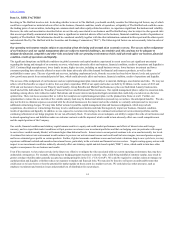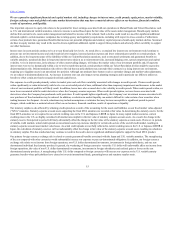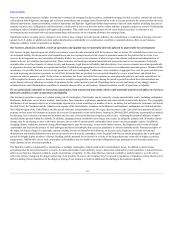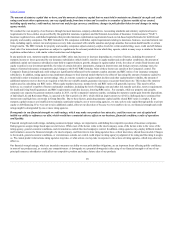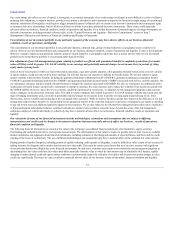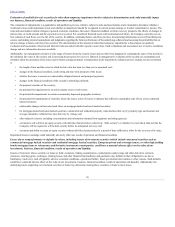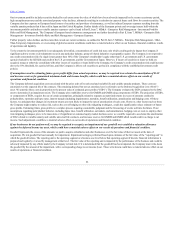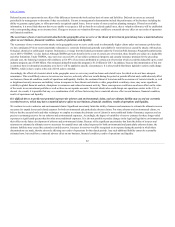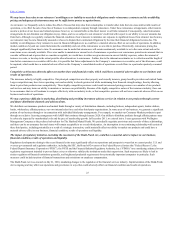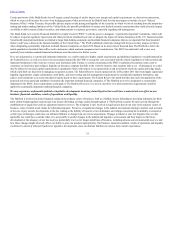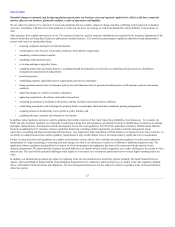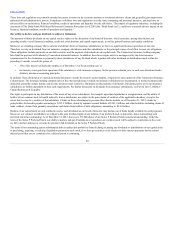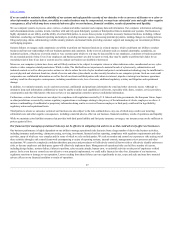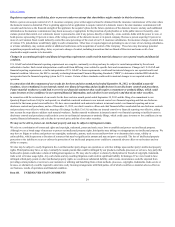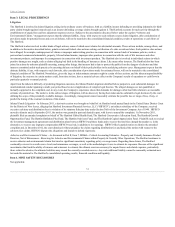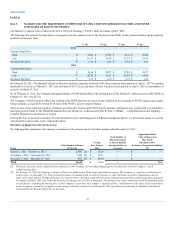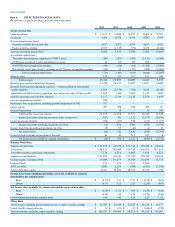The Hartford 2012 Annual Report Download - page 24
Download and view the complete annual report
Please find page 24 of the 2012 The Hartford annual report below. You can navigate through the pages in the report by either clicking on the pages listed below, or by using the keyword search tool below to find specific information within the annual report.
Table of Contents
Certain provisions of the Dodd-Frank Act will require central clearing of, and/or impose new margin and capital requirements on, derivatives transactions,
which we expect will increase the costs of our hedging program. Other provisions in the Dodd-Frank Act that may impact us include: the new “Federal
Insurance Office” within Treasury; the possible adverse impact on the pricing and liquidity of the securities in which we invest resulting from the proprietary
trading and market making limitation of the Volcker Rule; the possible prohibition of certain asset-backed securities transactions that could adversely impact
our ability to offer insurance-linked securities; and enhancements to corporate governance, especially regarding risk management.
The Dodd-Frank Act vests the Financial Stability Oversight Council (“FSOC”) with the power to designate “systemically important” institutions, which will
be subject to special regulatory supervision and other provisions intended to prevent, or mitigate the impact of, future disruptions in the U.S. financial system.
Systemically important institutions are limited to large bank holding companies and nonbank financial companies that are so important that their potential
failure could “pose a threat to the financial stability of the United States.” The FSOC published a final rule setting forth the process they propose to follow
when designating systemically important nonbank financial companies in April 2012. Based on its most current financial data, The Hartford is below the
initial quantitative thresholds that will be used to determine which nonbank companies merit consideration. The FSOC has indicted it will review on a
quarterly basis whether nonbank financial institutions meet the metrics for further review.
If we are designated as a systemically important institution, we could be subject to higher capital requirements and additional regulatory oversight imposed by
the Federal Reserve, as well as to post-event assessments imposed by the FDIC to recoup the costs associated with the orderly liquidation of other systemically
important institutions in the event one or more such institutions fails. Further, in certain circumstances the FDIC is authorized to petition a state court to
commence an insolvency proceeding to liquidate an insurance company that fails in the event the insurer's state regulator fails to act. If designated, we could
also be subject to increased capital requirements or quantitative limits with respect to our sponsorship of and investments in private equity and hedge funds,
which could limit our discretion in managing our general account. The Federal Reserve issued a proposed rule in December 2011 that would apply capital and
liquidity requirements, single-counterparty credit limits, and stress testing and risk management requirements to systemically important institutions, and
subject such institutions to an early remediation regime based on these requirements. The Federal Reserve has noted that they may tailor the application of the
proposed rule to the particular attributes of systemically important nonbank financial companies. If The Hartford were to be designated as systemically
important by the FSOC, these requirements could apply to The Hartford. However, it is not yet clear how or to what extent these requirements would be
applied to systemically important nonbank financial companies.
We may experience unfavorable judicial or legislative developments involving claim litigation that could have a material adverse effect on our
business, financial condition, results of operations and liquidity.
The Hartford is involved in claims litigation arising in the ordinary course of business, both as a liability insurer defending or providing indemnity for third-
party claims brought against insureds and as an insurer defending coverage claims brought against it. The Hartford accounts for such activity through the
establishment of unpaid loss and loss adjustment expense reserves. The Company is also involved in legal actions that do not arise in the ordinary course of
business, some of which assert claims for substantial amounts. Pervasive or significant changes in the judicial environment relating to matters such as trends
in the size of jury awards, developments in the law relating to the liability of insurers or tort defendants, and rulings concerning the availability or amount of
certain types of damages could cause our ultimate liabilities to change from our current expectations. Changes in federal or state tort litigation laws or other
applicable law could have a similar effect. It is not possible to predict changes in the judicial and legislative environment and their impact on the future
development of the adequacy of our loss reserves, particularly reserves for longer-tailed lines of business, including asbestos and environmental reserves, and
how those changes might adversely affect our ability to price our products appropriately. Our business, financial condition, results of operations and liquidity
could also be adversely affected if judicial or legislative developments cause our ultimate liabilities to increase from current expectations.
24


